 Written by Sonia Story
Written by Sonia Story
Many of us know the challenges associated with insomnia, restlessness, and interrupted sleep.
Sleep is so fundamental to our well-being that when our nightly rest is disrupted or shortened, we immediately notice the ill effects. Without proper sleep, we become irritable, hypersensitive, prone to illness, find it difficult to concentrate, and are more likely to have accidents. If sleep deprivation is severe enough over time, it can lead to pain, anxiety, accelerated aging, and even mental illness.
Caregivers can use these three simple strategies to help themselves and their loved ones fall asleep, rest deeply, and stay asleep for longer durations. These techniques take only minutes to do and they are:

Kimberly M, shares a story about how her 80-year-old friend slept much better after using innate rhythmic movements to help him sleep. After only a week of doing the innate rhythmic movements, she reported that,
The term “innate rhythmic movements” may make this trick sound complex, but it’s actually incredibly simple. It just refers to the simple rhythmic movements that all healthy babies do automatically, as part of normal development. These movements serve many functions, including brain growth and the development of mature sensory processing.
Parents for eons have intuitively held and rocked their babies in soothing rhythms as a way to calm them and help them fall asleep. But did you know that rhythmical rocking can help anyone fall asleep?
The brain and body are wired to respond to rhythm. Rhythmic stimulation is used effectively in occupational therapy, physical therapy, trauma healing, and education to help people of all ages overcome a variety of challenges.
Therapists, parents, and caregivers use these innate rhythmic movements for patients of all ages because they are highly beneficial for both the brain and body. At the same time, these movements are excellent for promoting better sleep.
For example, SM is the mother of an 8-year-old girl with a serious infection that severely impacted her ability to sleep. After trying rhythmic movements with her daughter, she had this to say:
One occupational therapist taught the simple “Abdominal Rocking” technique shown below to parents and children to promote sleep. She reported the following results:
To use this simple, revolutionary technique, just perform the following steps. You should adjust the speed, timing, and range of motion according to the preferences of the individual receiving the movement whether that be yourself or a loved one; it should feel very relaxing.
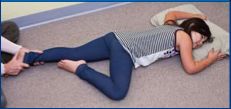
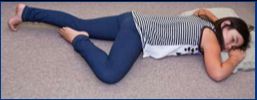
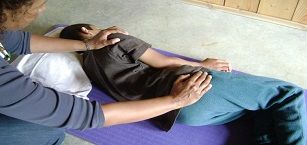
You can learn more about innate rhythmic movements for helping with brain and sensory processing issues in the Brain and Sensory Foundations courses taught by Sonia Story, neurodevelopmental movement educator.
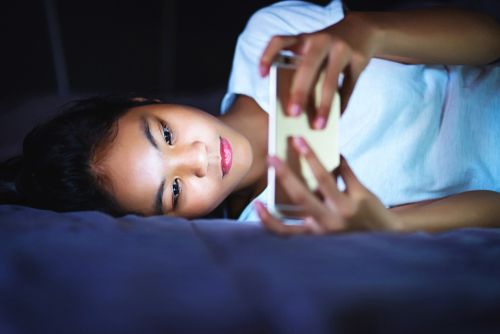
Our highly electronic and technologically oriented world often comes with the price of poor sleep.
The light from screens of electronic devices can disrupt the body’s production of melatonin, a hormone that helps us regulate sleep cycles. Without enough melatonin, it can be difficult to fall asleep and stay asleep.
Exposure to electricity itself may also make sleep far more difficult for some individuals, according to Katie Singer, author, of Electronic Silent Spring. She says,
Electronic Silent Spring, Facing the Dangers and Creating Safe Limits, by Katie Singer, Portal Books, 2014, p. 35
An easy way to mitigate these electronic disruptors of sleep is to reduce our time in front of our electronic screens, and limit exposure to electronics and WiFi in general if possible.
Follow these easy steps to promote restful sleep:
Try as many of these steps as possible for a week or two and see if you notice a big difference in your quality of sleep.
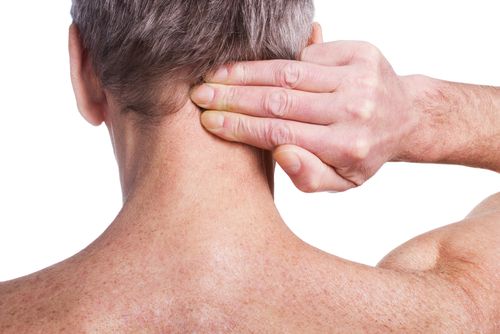
This last tip is so easy, it is hard to believe it works. It comes from an ancient Japanese healing art called Jin Shin Jyutsu (JSJ). In JSJ, by placing the hands over strategic body locations, such as the outer wrist and knee, it restores energy and balance to specific organs and body systems.
Research suggests that the use of Jin Shin Jyutsu techniques can also help with insomnia. In one study, nurses who engaged in regular Jin Shin Jyutsu self-care reported less sleeplessness. Their muscle aches and headaches also diminished, and the nurses reported increased feelings of calm and positive emotions.
To help with your insomnia, try this simple technique from Jin Shin Jyutsu:
This easy hands-on technique may help you and those you care for to fall asleep and sleep more deeply.
Jin Shin Jyutsu practitioners are highly trained with in-depth comprehensive techniques. However, anyone can learn many simple self-care tools from the Jin Shin Jyutsu book by Alice Burmeister and Tom Monte: The Touch of Healing: Energizing Body, Mind, and Spirit with the Art of Jin Shin Jyutsu.
For more information on better sleep, check out our Top 5 Best Products to Help You Sleep Better Every Night and the rest of the amazing and helpful articles on Caregiver University. And, if you're looking for exceptional therapy and medical tools to use for yourself, your loved ones, or your clients check out the full catalog on Rehabmart.com.

Sonia Story has studied with many of the world's finest experts in Neurodevelopmental Movement programs, completing training in Rhythmic Movement Training, Brain Gym, Neuro-Sensory-Motor & Reflex Integration, and more. She developed the Brain and Sensory Foundations curriculum to share powerful movements for transforming brain, body, and sensory challenges. She teaches live and online courses for parents, OTs, PTs, SLPs, VTs, educators, counselors, health practitioners, and caregivers, and continues to learn from her clients of all ages. Learn more about Sonia at moveplaythrive.com.